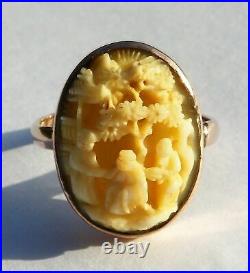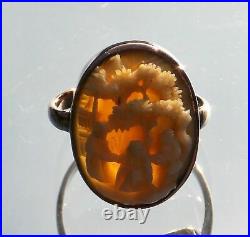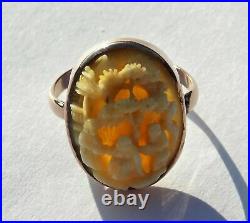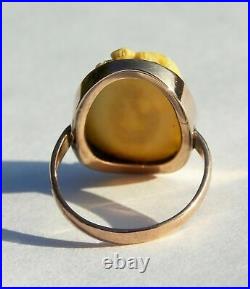Antique Silver & M. O. P. Snuff Box Depicting Napoleon, China 1810
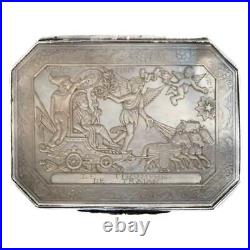
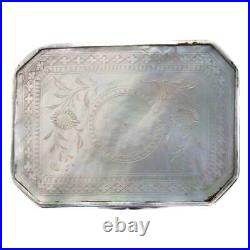

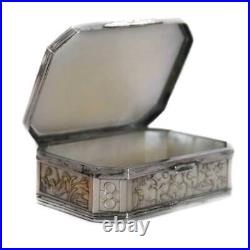
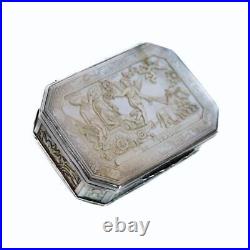
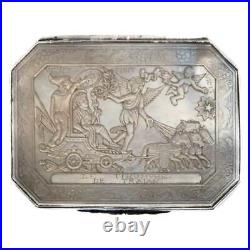
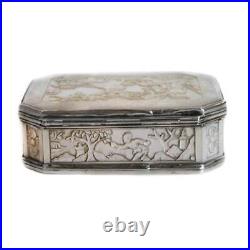
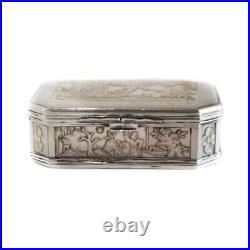

This very fine silver snuff box features finely engraved and bas-relief mother of pearl panels and is of rectangular shape with canted corners. The decoration has been executed in Canton in the Chinese style, save for the principal carved panel to the lid, which has been copied from a French medallion. This relief plaque features Napoleon Bonaparte in a framed classical scene entitled’LE TIROMPHE DE TRAJAN’ (sic),’The Triumph of Trajan’ and bears the legend’Venit Vidit Vicit';’he came, he saw, he conquered’. It is most likely that the box would have been commissioned in Canton around 1810 by a French sea captain or trader, who would have provided a medallion bearing the design of the principal plaque for the pearl carver to copy. At first sight, it is not obvious that the classical scene to the top of the box has been copied from a commemorative die-stamped token issued in Paris on 31stDecember 1805, to celebrate Napoleon’s acceptance of the new title proposed for him by the Tribunat,’Napoleon le Grand’ or’Napoleon the Great’, on 30th December. This title was offered to Napoleon after his greatest and most important victory of the Napoleonic Wars at the Battle of Austerlitz, (sometimes referred to as’The Battle of the Three Emperors’) on 2nd December 1805, when he inflicted a crushing victory over Czar (Tsar) Alexander I of Russia and Holy Roman Emperor, Francis II of Austria. Napoleon drew many parallels with ancient Rome in his attempts to legitimize and strengthen his post revolutionary imperial rule and build his personal myth on the journey from republican hero to imperial triumphator. He wished his own French Empire to outshine that of Rome, the greatest empire of ancient times. Of all the events held in Rome, processional triumphs were the most magnificent and spectacular pageants in its history and are depicted in great detail in the sculptural scenes on monuments such as Trajan’s Column, Marcus Aurelius’ Column and the Arch of Trajan in Benevento. Many drawings have been made of these, including those by Piranesi, through which the French would have accessed the iconography used in designing the medallion. The Emperor Trajan, identified by Gibbon as one of the’Five Good Emperors’, is generally regarded as the best Roman emperor of all. He was a soldier emperor who ruled from 98 AD until his death in 117 AD and his reputation as a good and great Emperor has survived intact. He presided over the greatest military expansion in Roman history, conquering Dacia, Armenia and Mesopotamia and the lands of the empire reached their zenith at the time of his death. Trajan was also known for his justice, philanthropy, extensive public building programme and social welfare reforms. Napoleon hoped to emulate him and’borrow’ glory from being identified with this legendary figure. The principal panel depicts Napoleon, dressed in Roman costume, seated in a chariot and holding a sceptre in his left hand. The chariot is pulled by four horses and driven by the winged figure of Victory who is holding the reins with her left hand and has turned towards Napoleon, offering him a frond of palm and a laurel wreath crown with her outstretched right hand. Minerva stands at the back of the chariot holding her shield above the head of the Emperor in a protective gesture. In the sky above, a winged cherub holds an incense burner in his right hand, the smoke wafting towards Napoleon. To the right hand side of the panel is one rayed star, perhaps an oblique reference to the former King Louis XIV being known as Le Roi-Soleil or The Sun King, i. The sun’s dynasty has ended and a new star now shines brightly in the sky. Louis XIV had been depicted in similar fashion as an imperial triumphator in his chariot, a popular theme in post renaissance France, which Napoleon resurrected to serve his own purposes. The border has been executed in the Chinese style and engraved with the favourite Tang dynasty design of squirrels with grapes and vine leaves. The sides of the box are decorated with eight bas-relief panels, carved in the Chinese style, with the four larger panels featuring naturalistic landscape designs with trees, plants, buildings, boats, birds and figures and the four smaller panels (at the canted corners) each featuring a single stylized floral motif. To the base of the box is a finely engraved mother of pearl panel in the Chinese style with a vacant circular cartouche with geometric border, surrounded by naturalistic chrysanthemum sprays, the whole within a decorative geometric border. The silver mounts are not marked. This is a rare and fascinatingly complex cross cultural silver and mother of pearl box from the Chinese Qing dynasty period which would have been commissioned by a French sailor or trader in the Port of Canton, made by Chinese silversmiths and pearl carvers and features Napoleon in the guise of Trajan, the Emperor of Rome. A unique object which celebrates the achievements of three of the world’s greatest empires, separated in time by 1,700 years. Height, 2 cms, width 6.5 cms, depth 4.8 cms. Achille Collas, Tresor de Numismatique et de Glyptique ou Receuil General de Medailles, Monaies, Pierres Gravees, Bas-Reliefs etc. Didier et Cie, Paris 1858, page 137, illustrated page 536. Diana Rowell, Paris: The’New Rome’ of Napoleon I, Bloomsbury Academic, London and New York 2012. Edward Gibbon, The History of the Decline and Fall of the Roman Empire, W Strahan and T Cadell, London 1776-88. This item is in the category “Antiques\Asian/Oriental Antiques\Chinese\Other Chinese”. The seller is “josephcohenantiques” and is located in this country: GB. This item can be shipped worldwide.
- Primary Material: Silver
- Original/Repro: Antique Original
- Chinese Dynasty: Qing (1644-1911)
- Product: Mother of pearl
- Features: Handcarved
- Region of Origin: Chinese
- Country of Origin: China
- Age: 1800-1849




